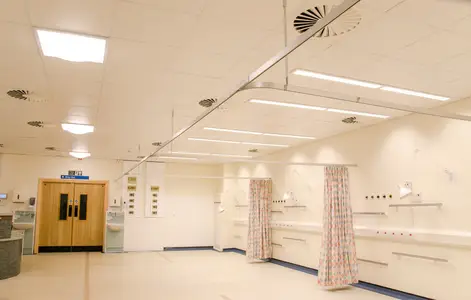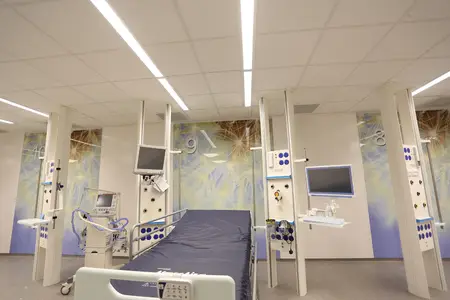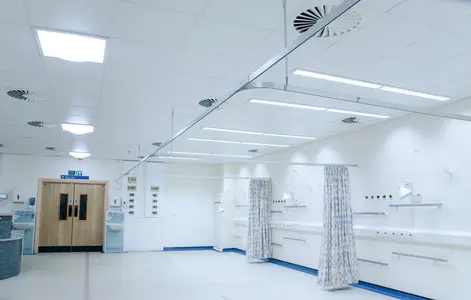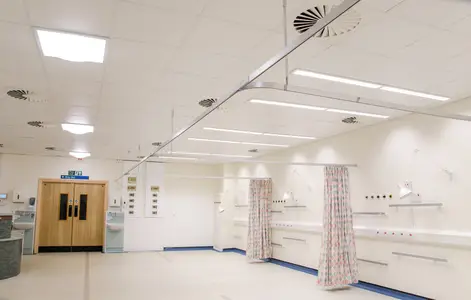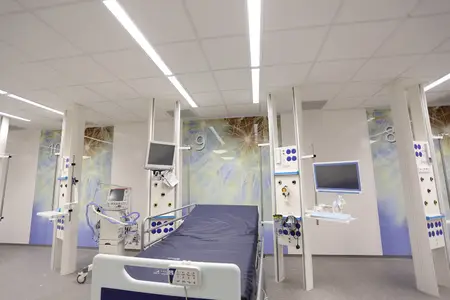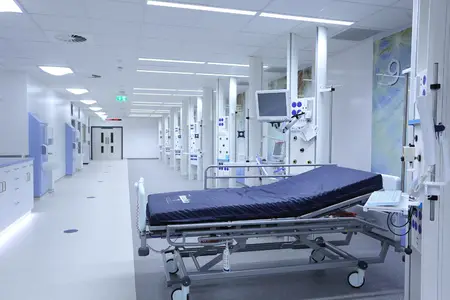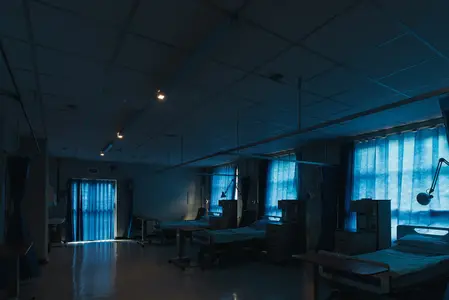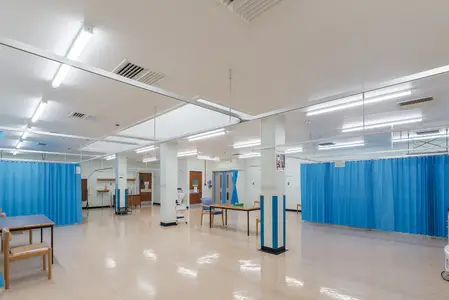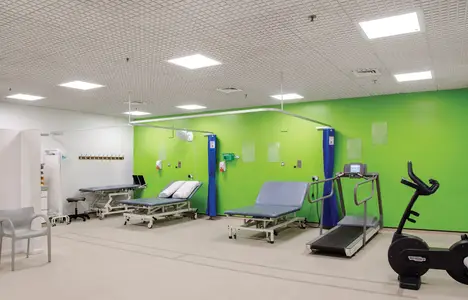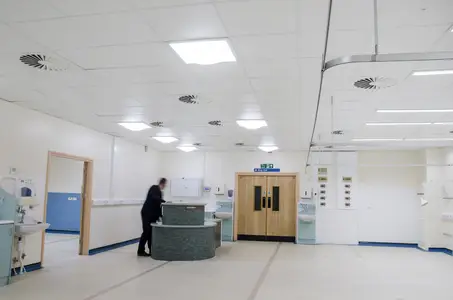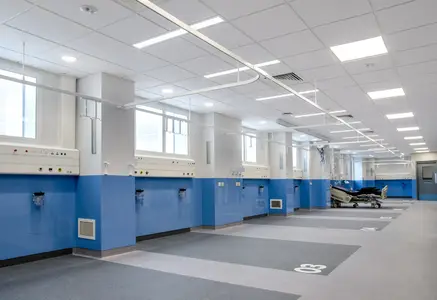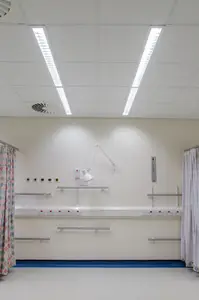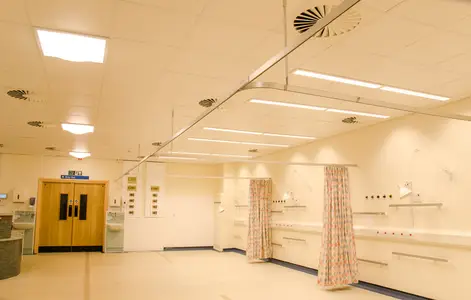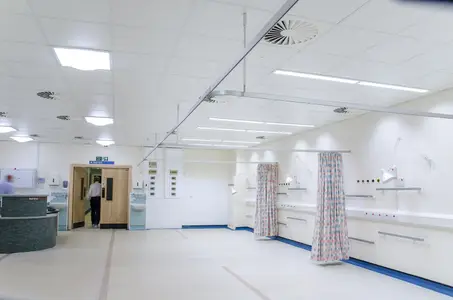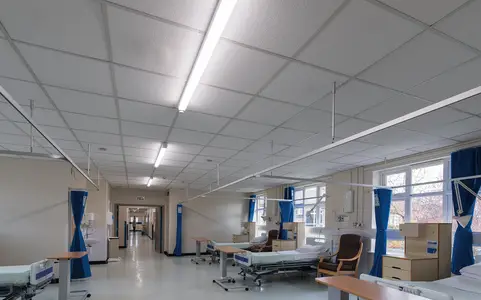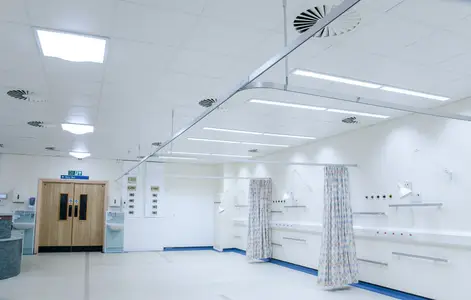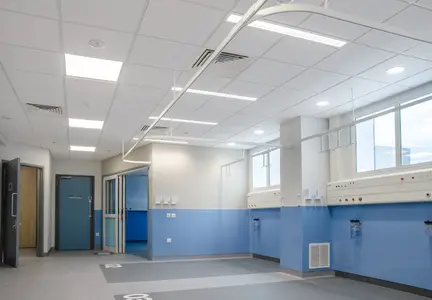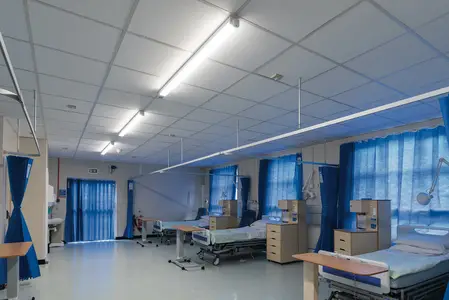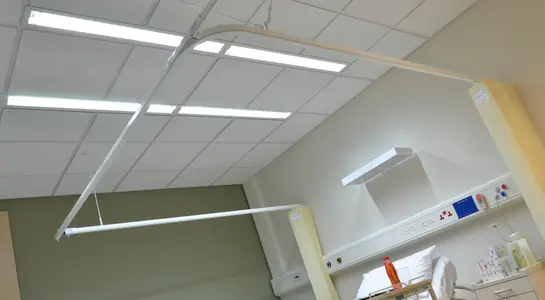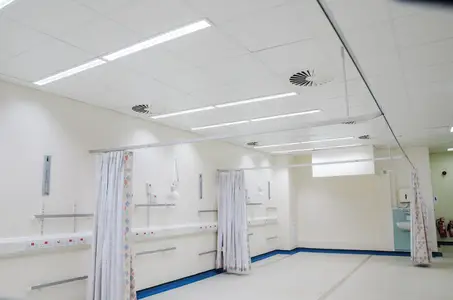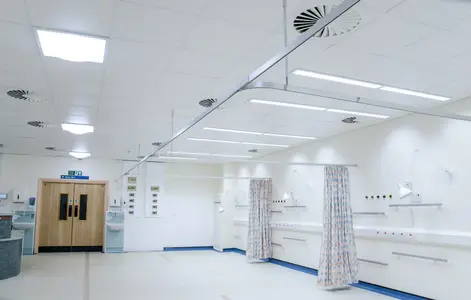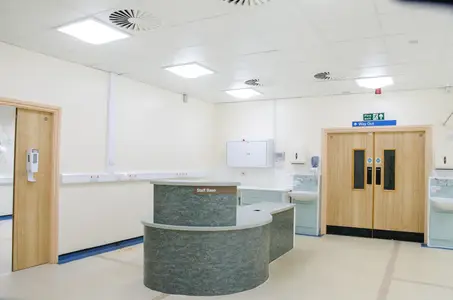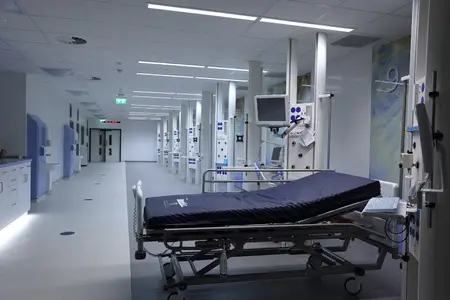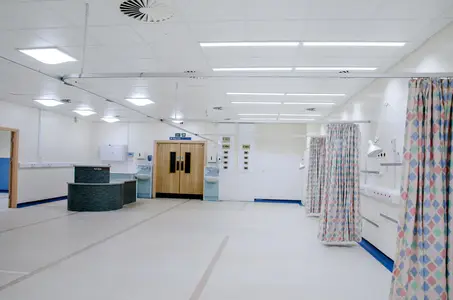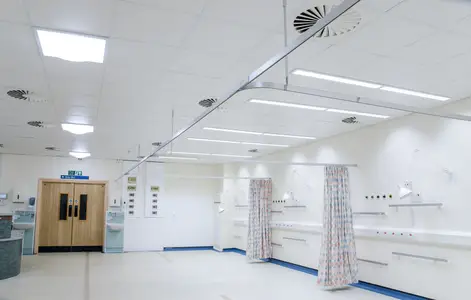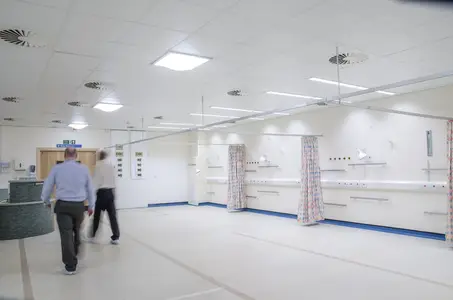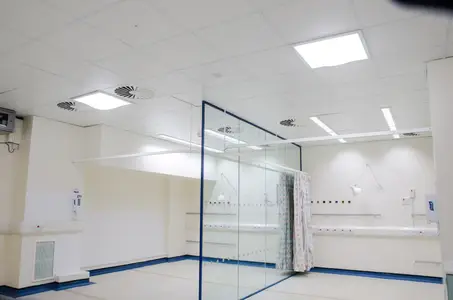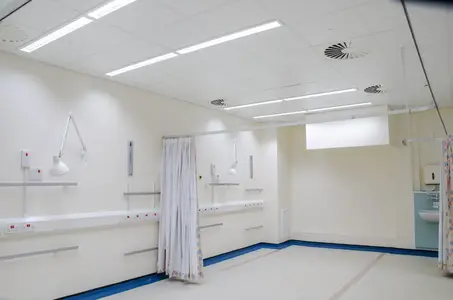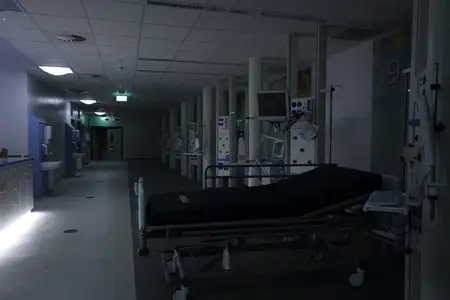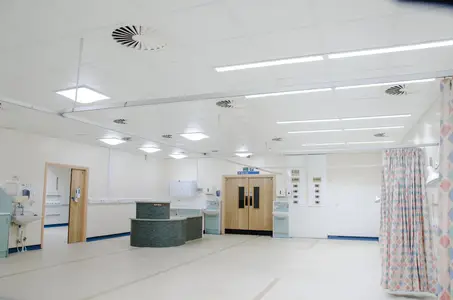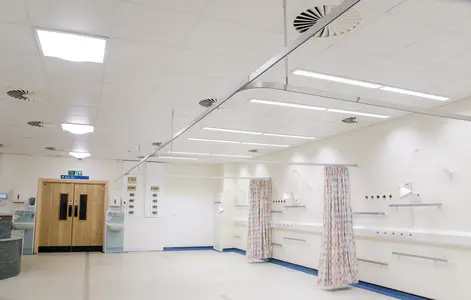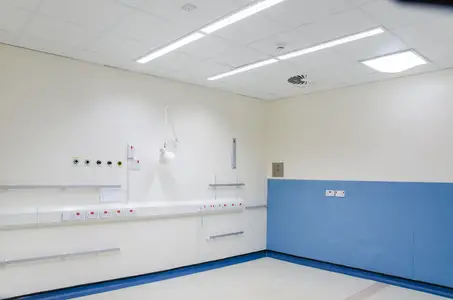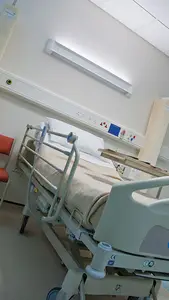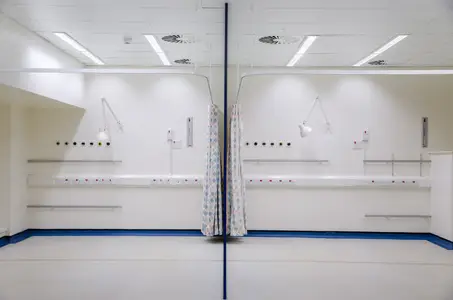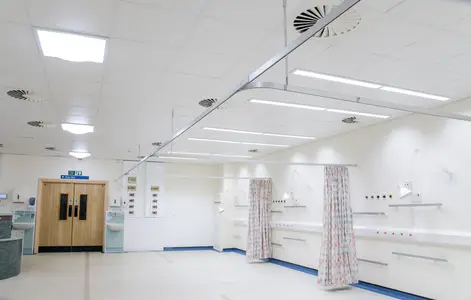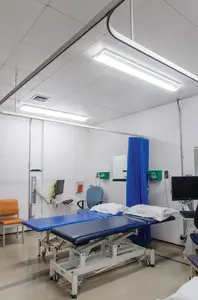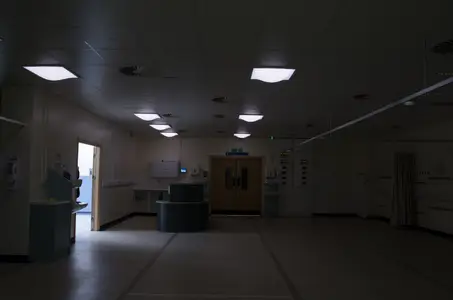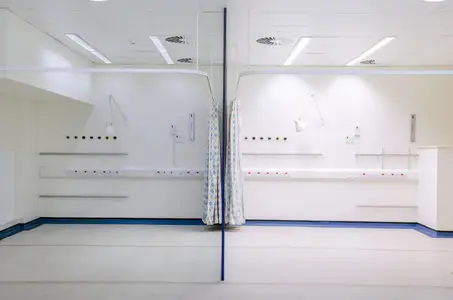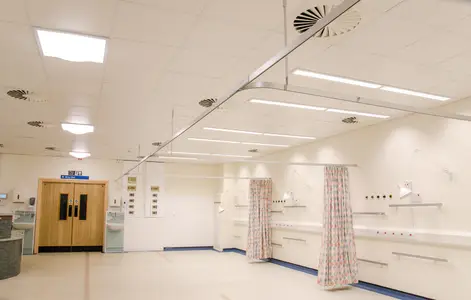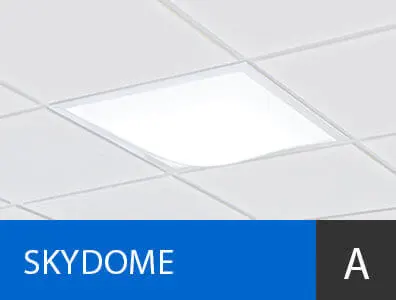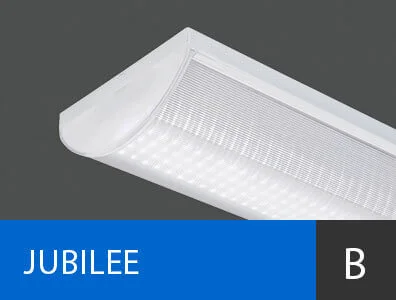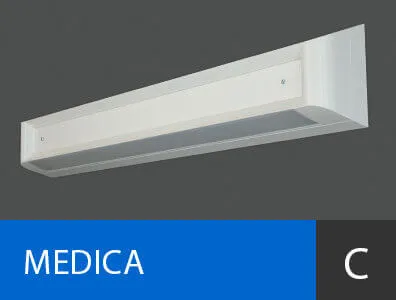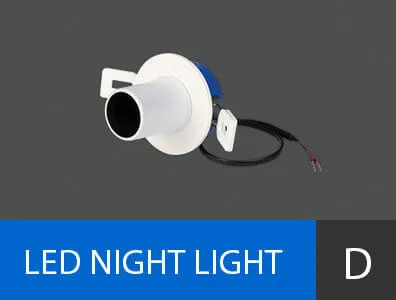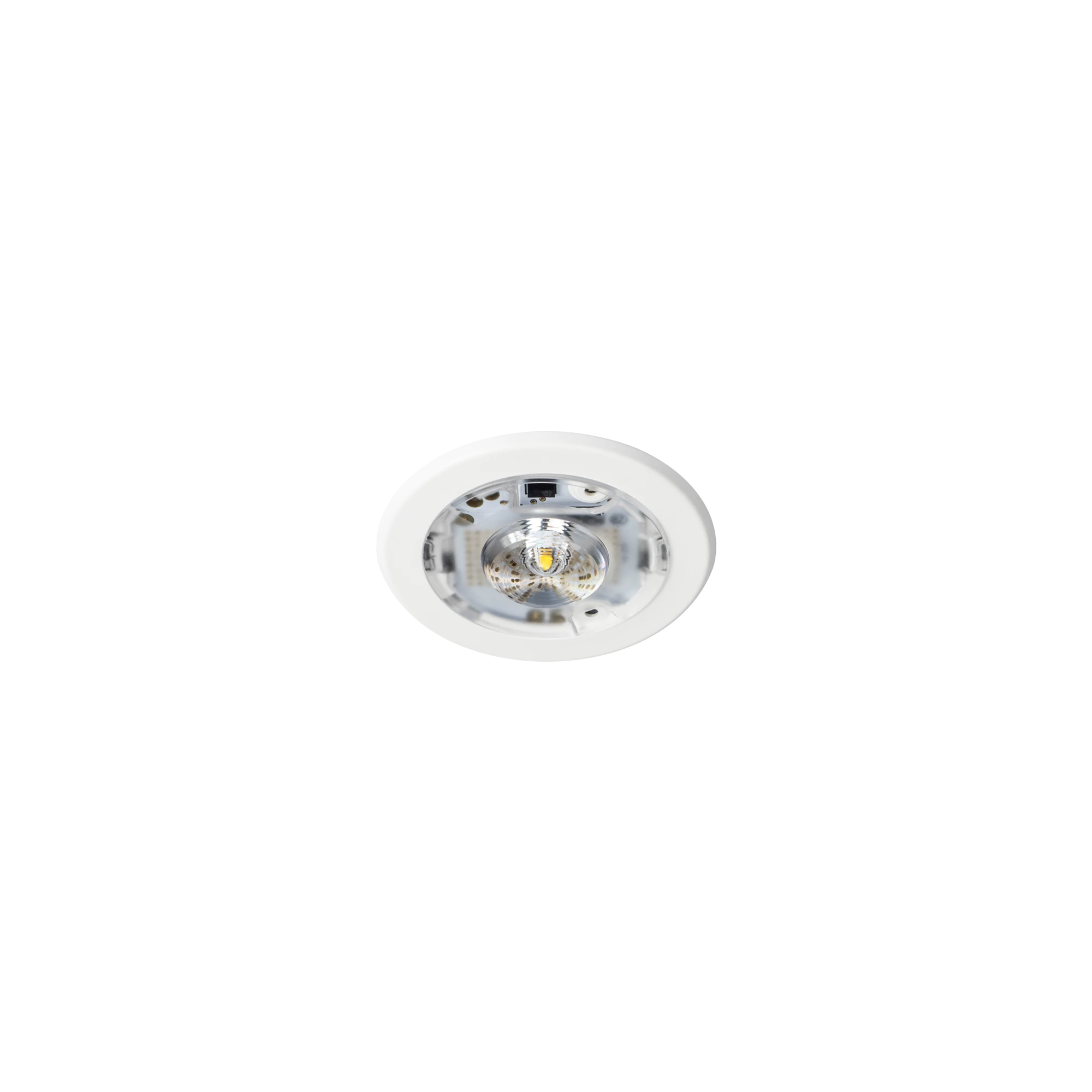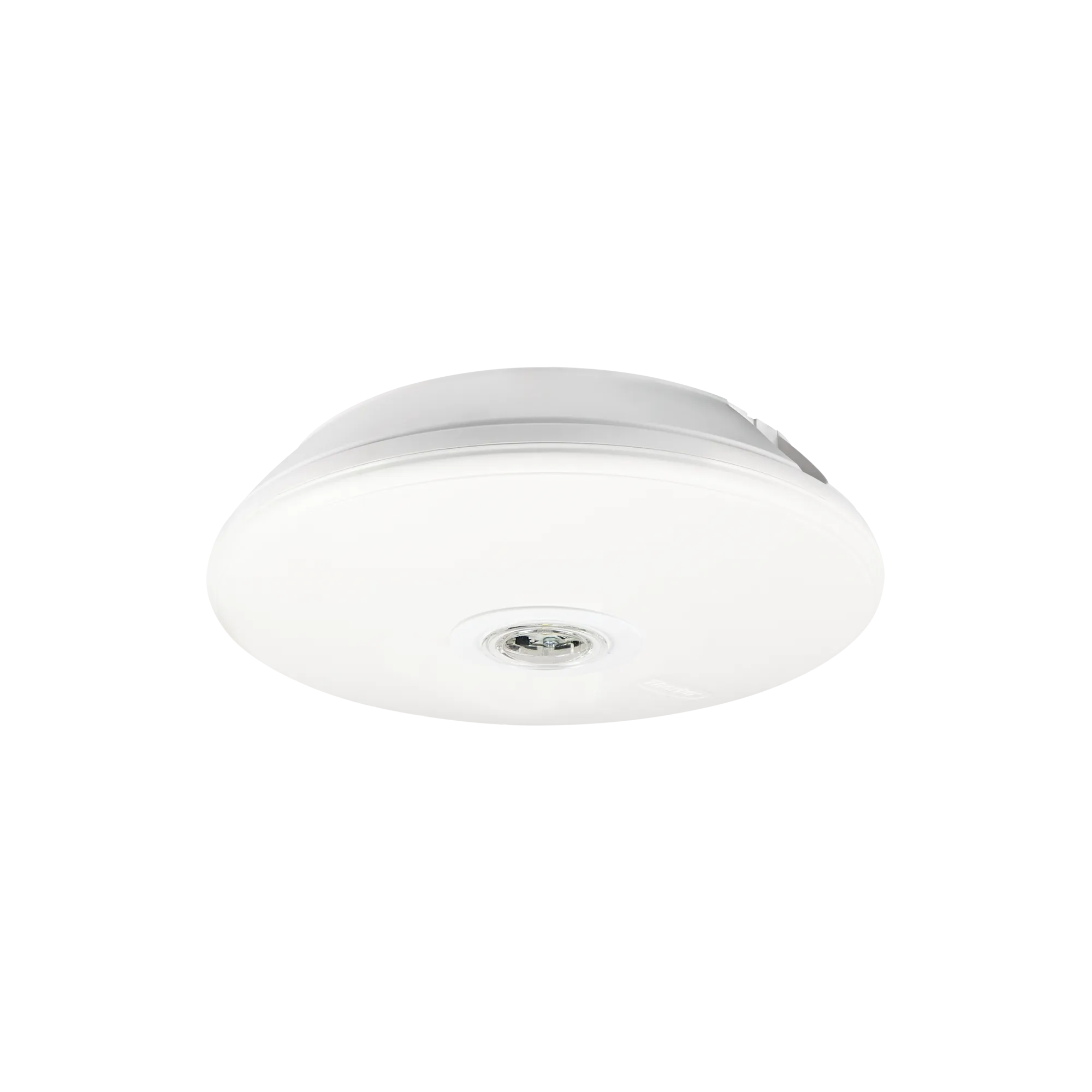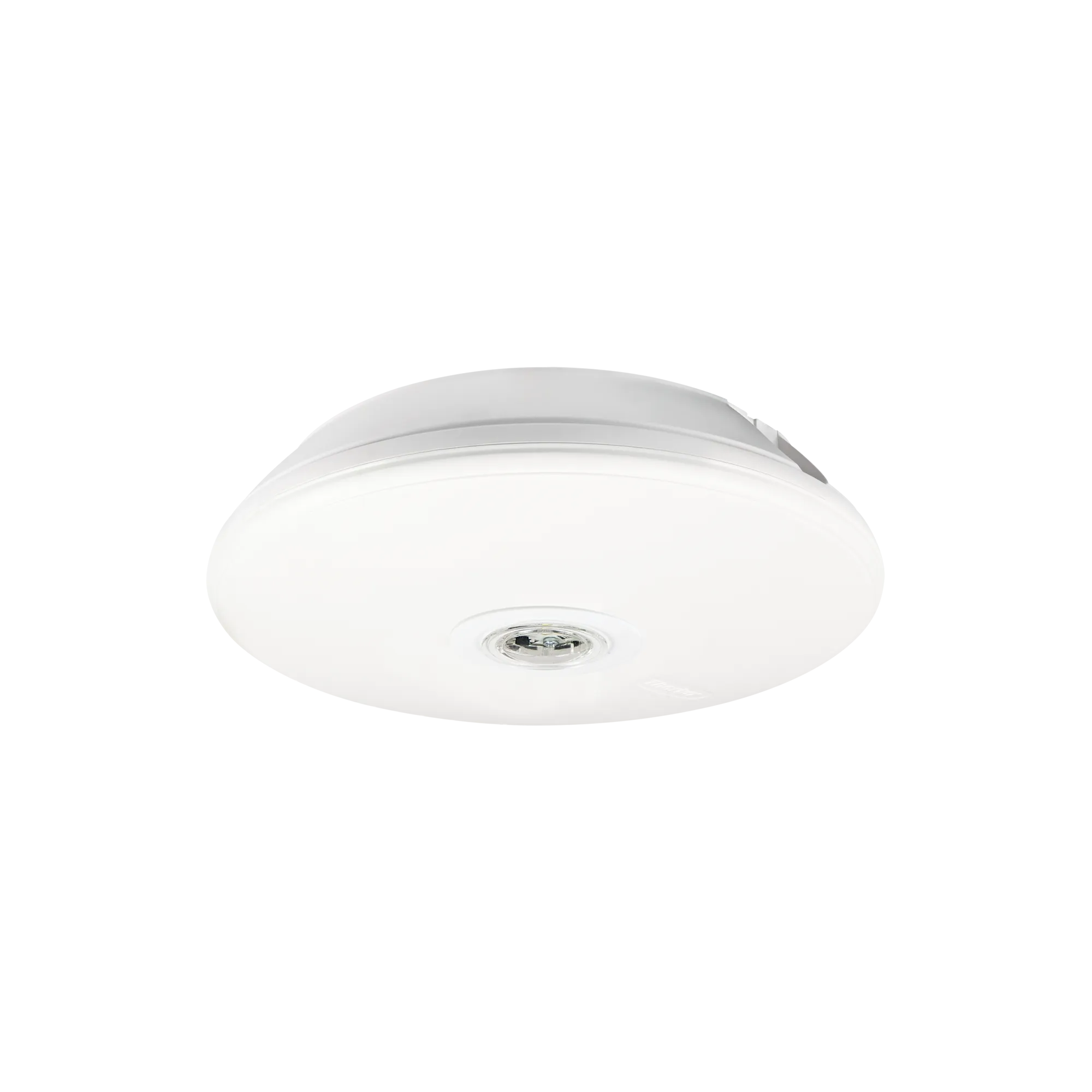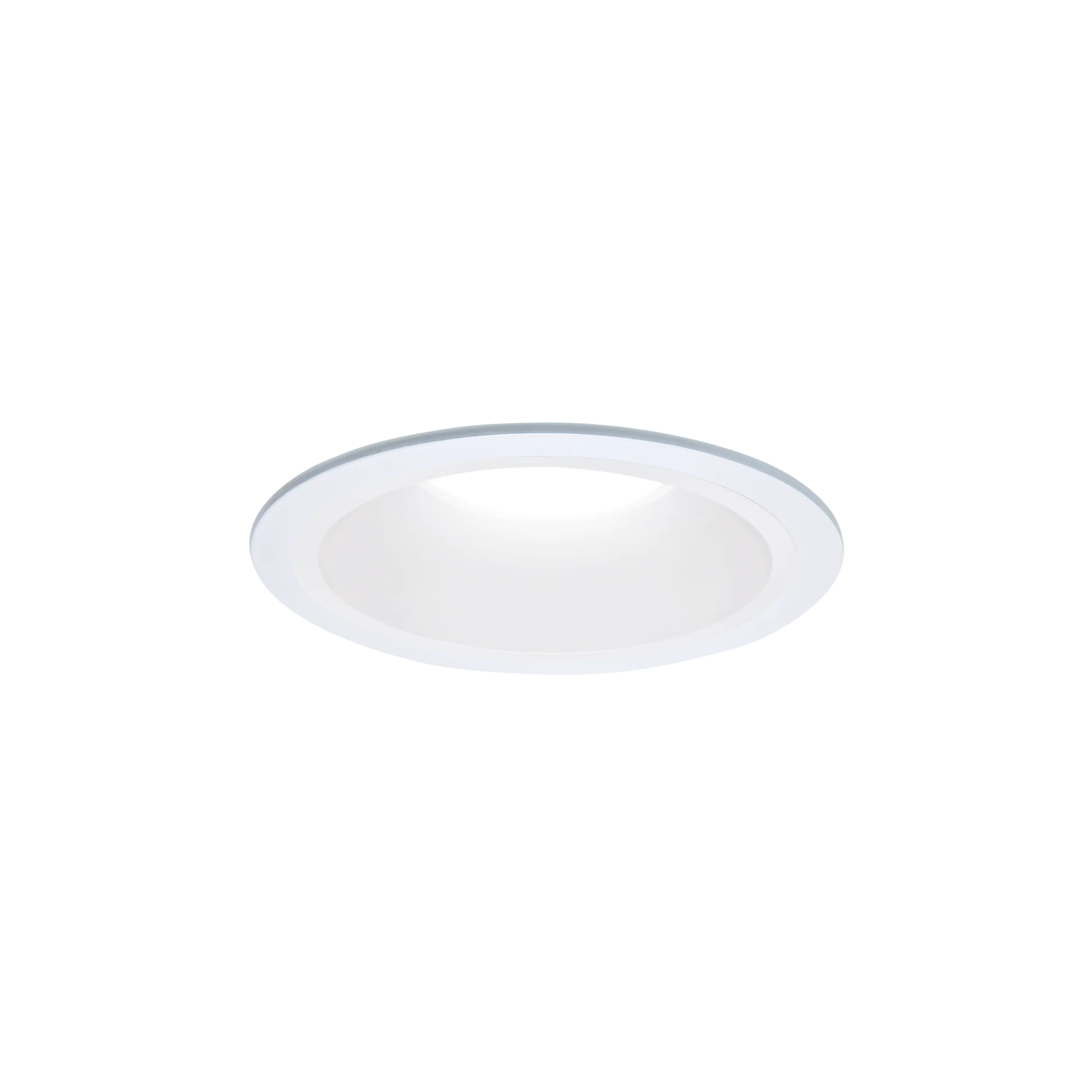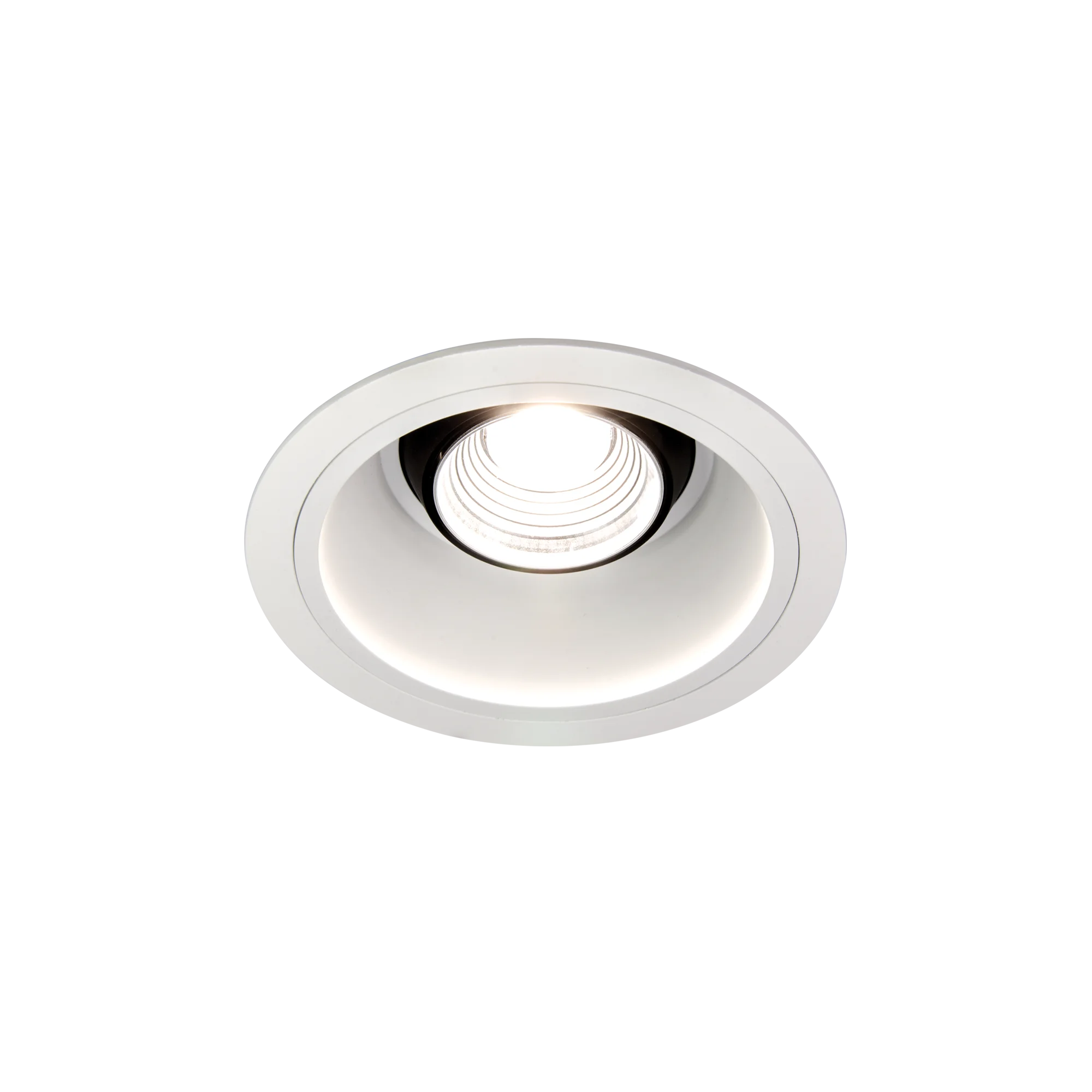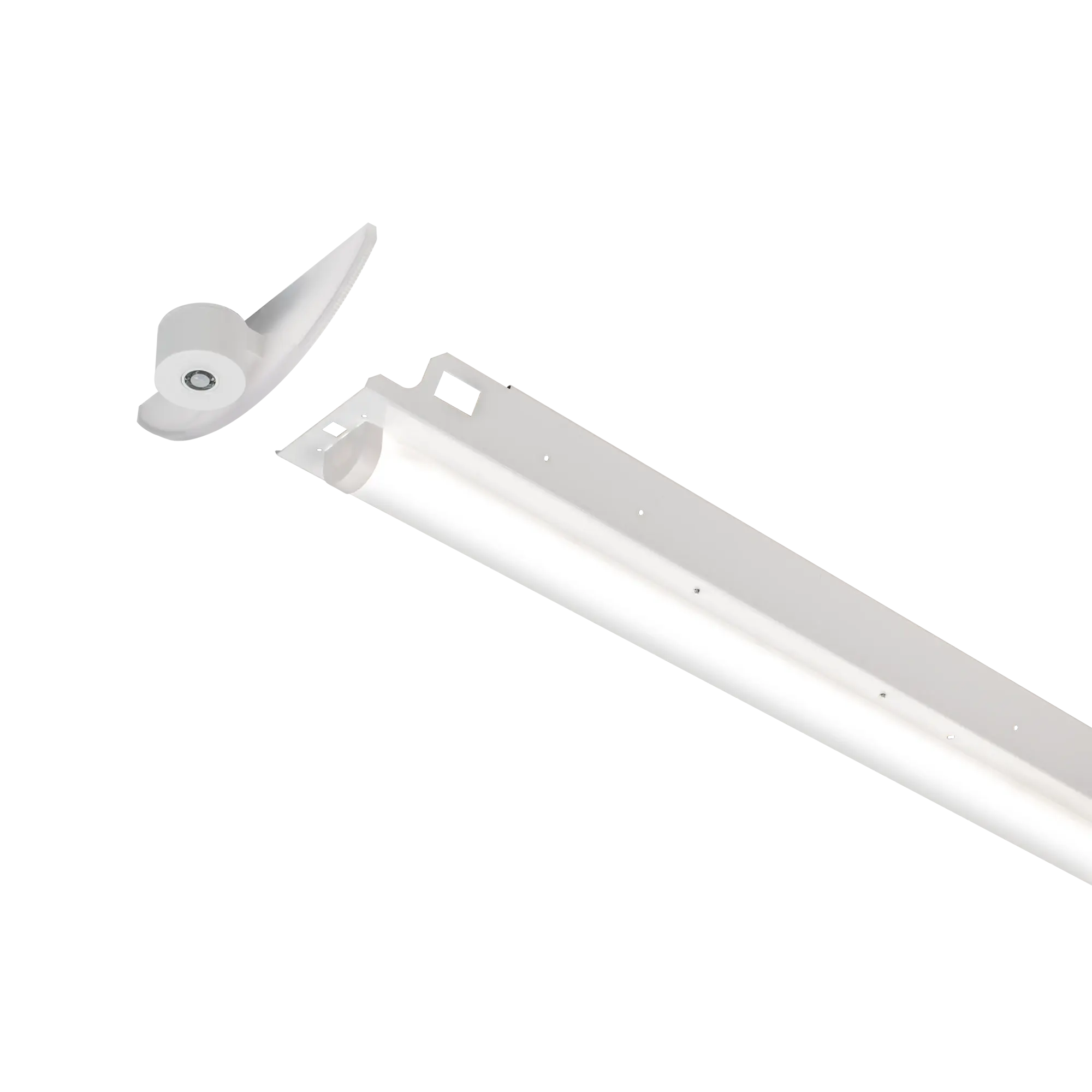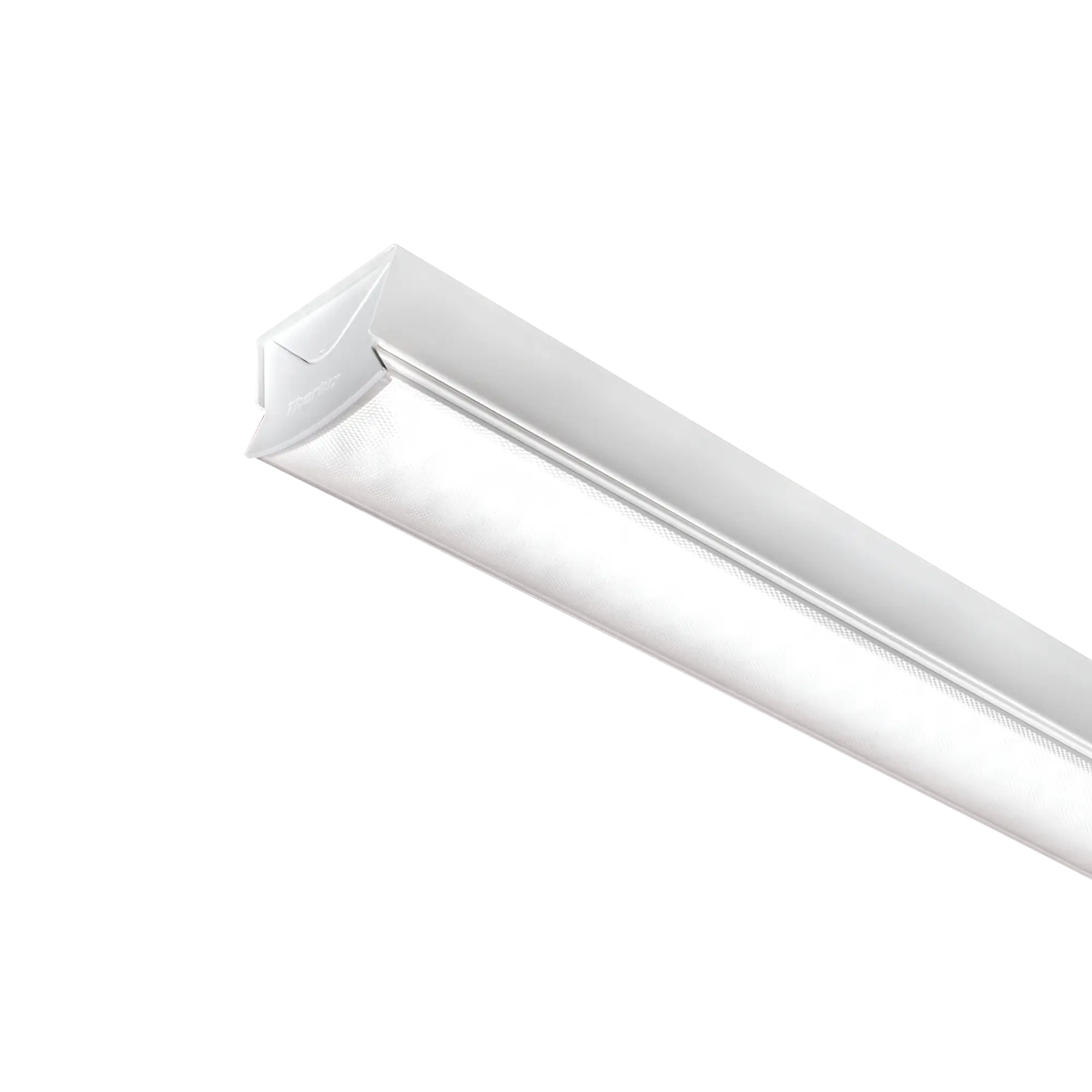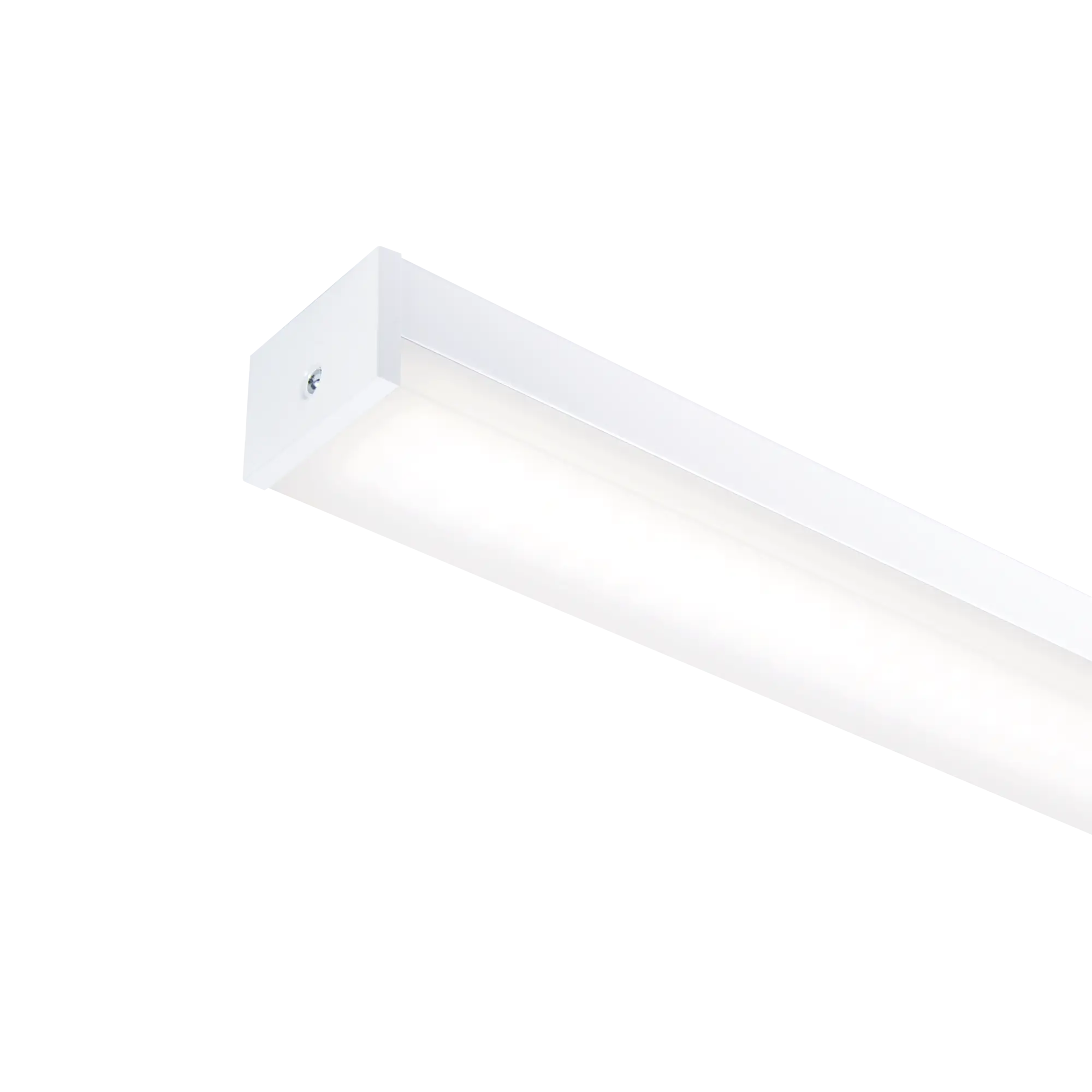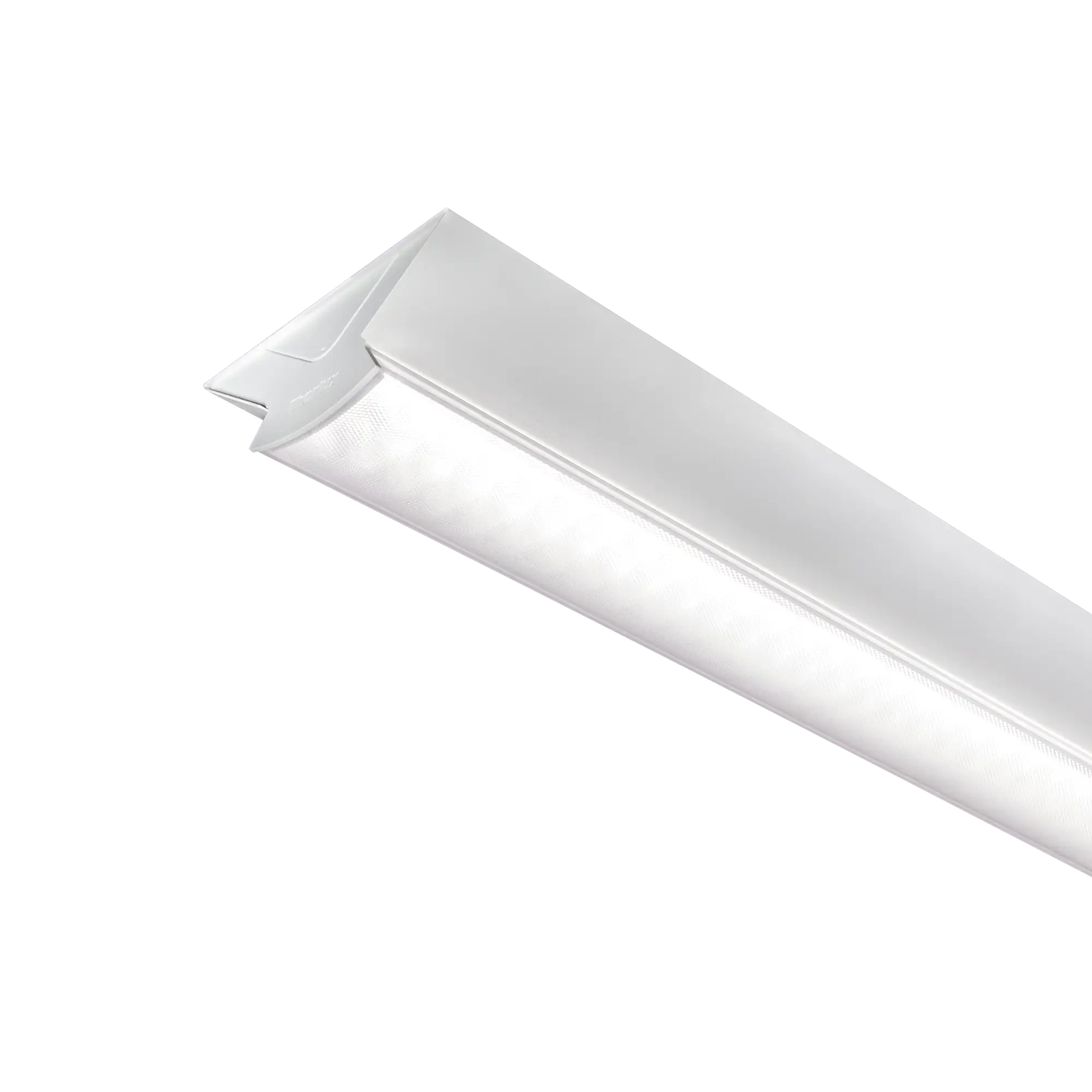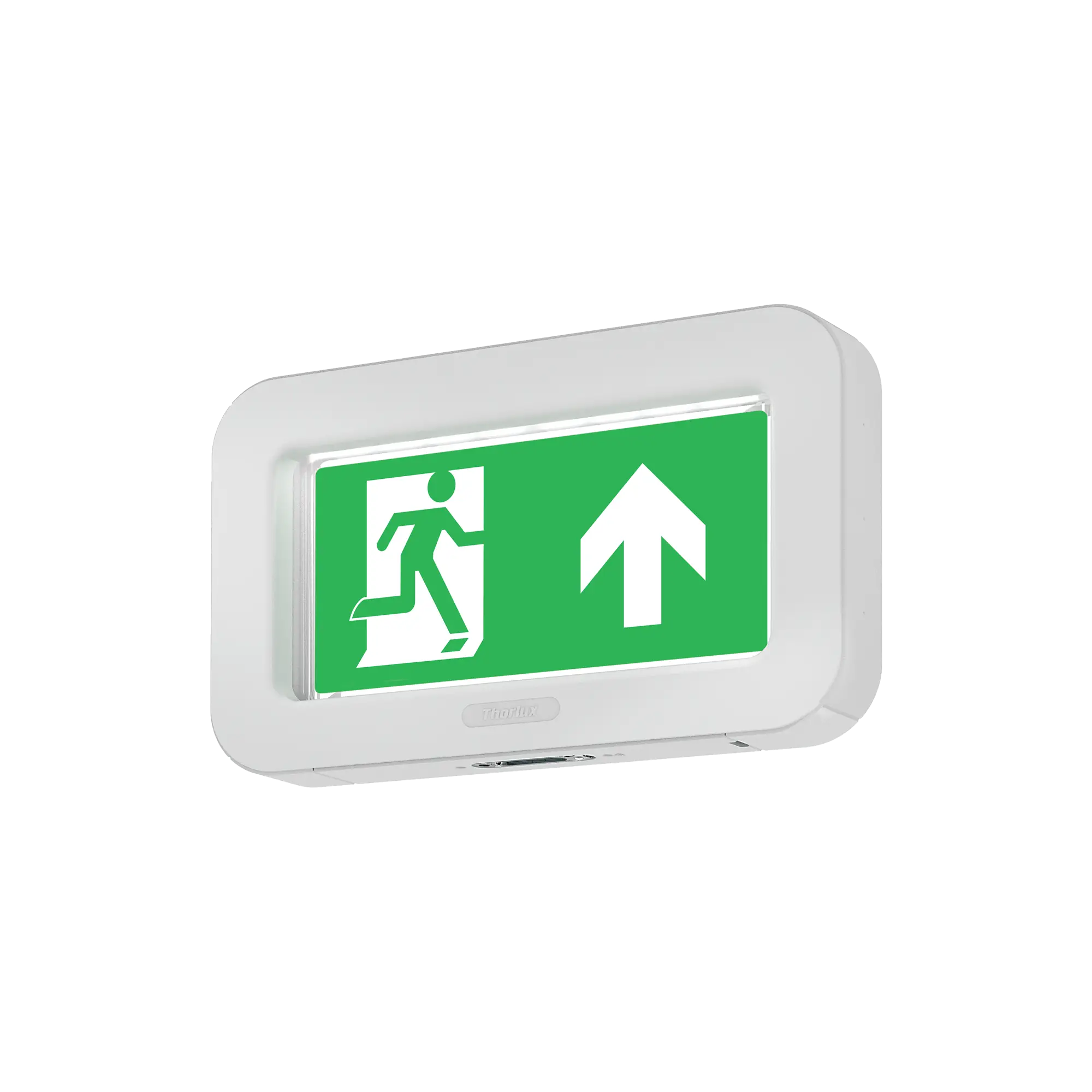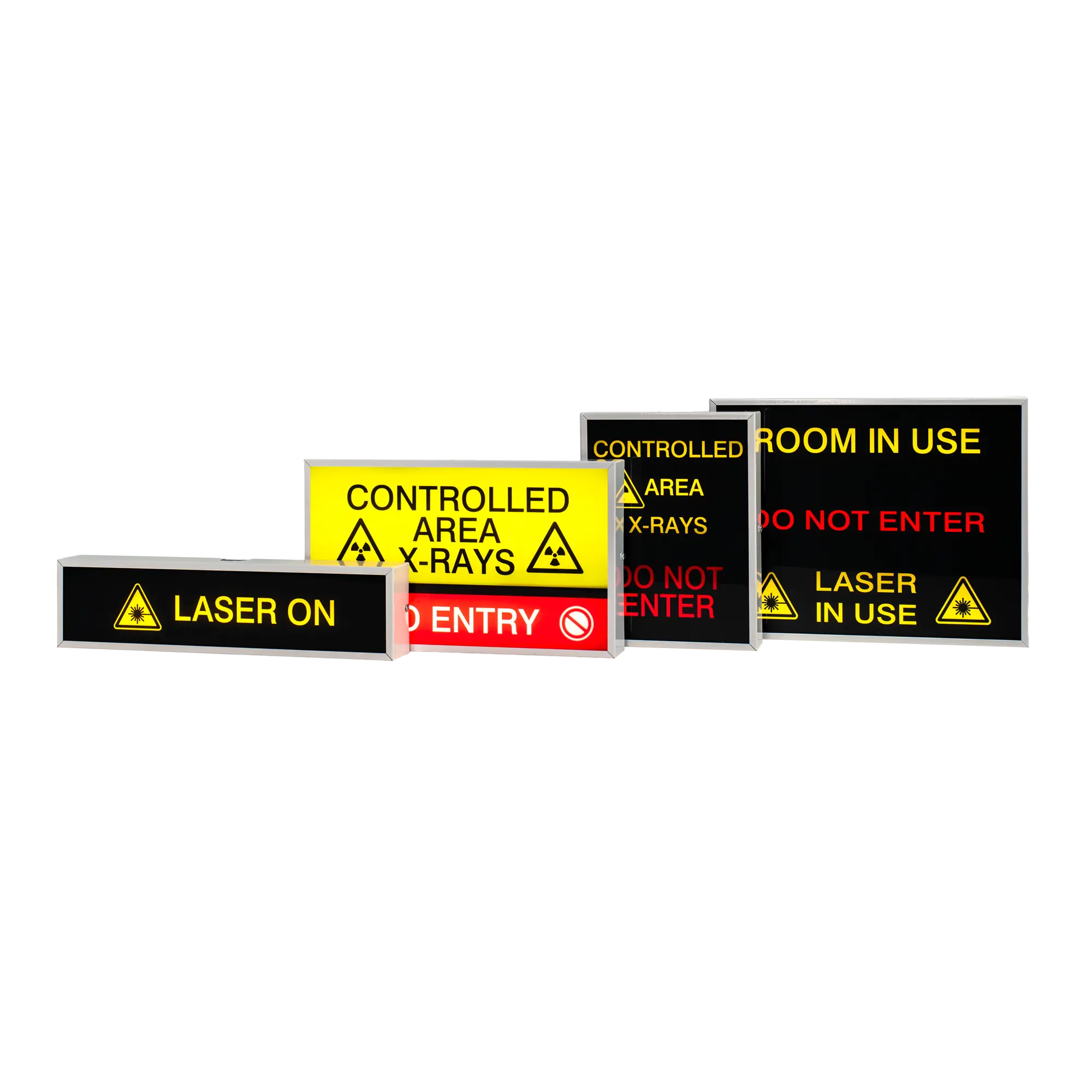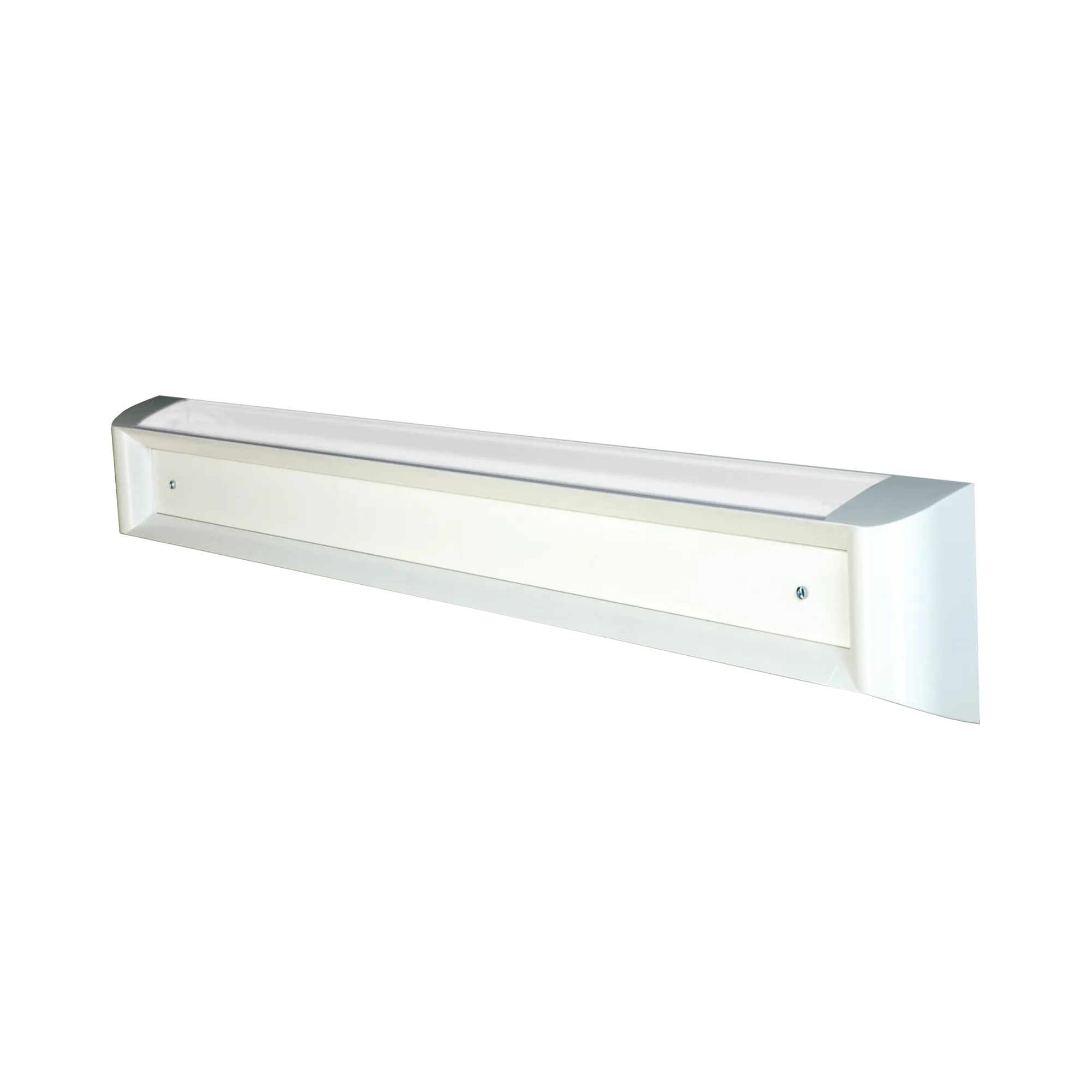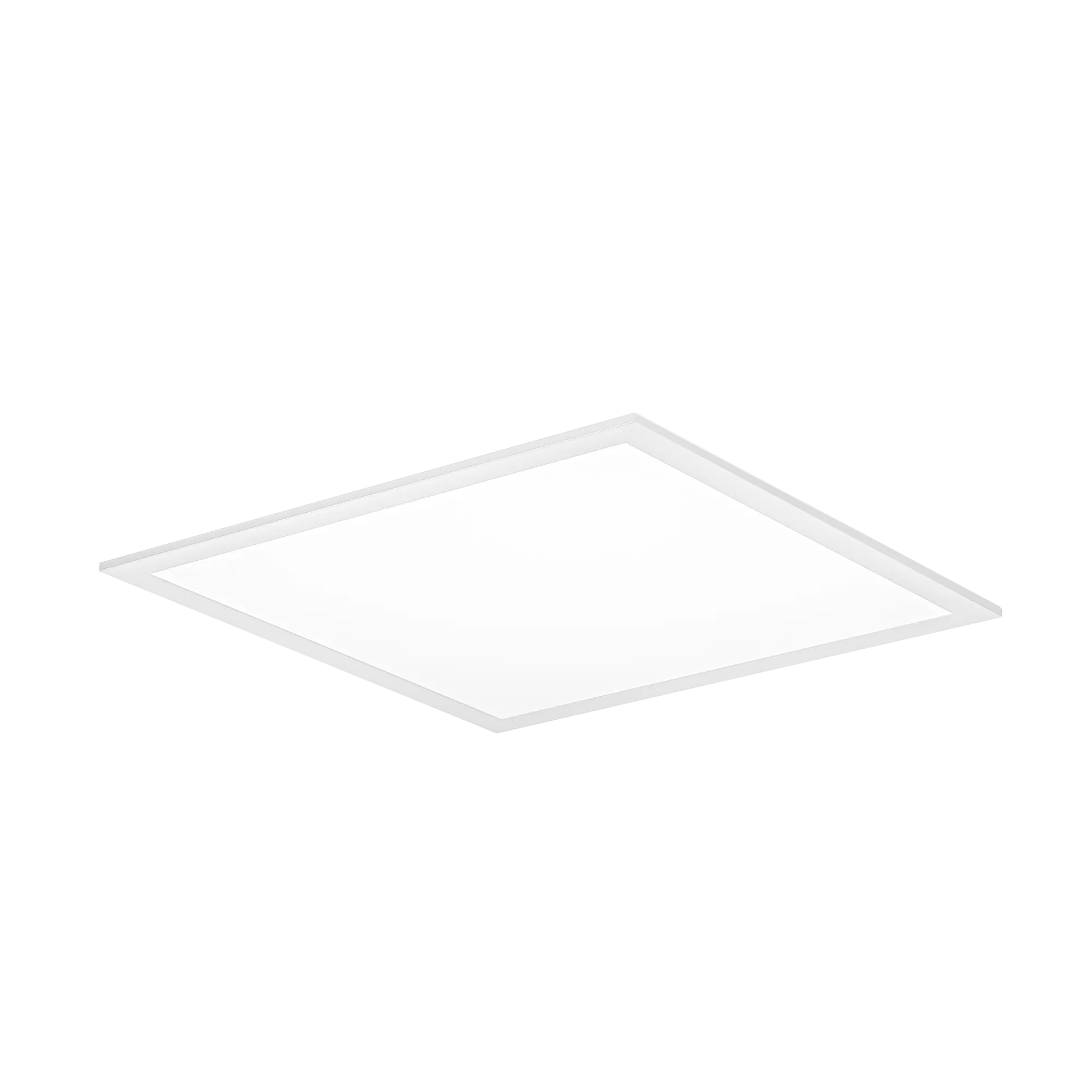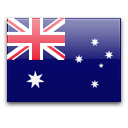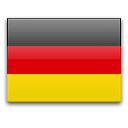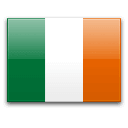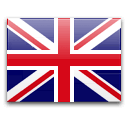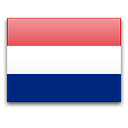Ward & Care Areas
Lighting within ward areas has to be a careful balance between function, aesthetic and energy efficiency. Lighting levels need to be high enough to allow nursing staff to provide care, but not so high as to impact on the comfort of patients trying to rest. SLL LG2 Hospital Lighting Guide: Hospitals and Health Care Buildings provides detailed guidance on the lighting performance required in these applications. Lighting requirements within ward areas can generally be divided into four parts, general lighting, patient lighting, night lighting and watch lighting.
Whilst this may seem complicated, it can be achieved easily with just three luminaire types.
Illumination Levels
| Locations | Maintained illuminance (lux) | Notes |
|---|---|---|
| General lighting | 100 | Luminaires to use lamps with a colour rendering capability of RA80 |
| Patient reading | 300 | To be controlled by the patient and to be provided over the patient activity/reading area |
| General nursing care | 300 | To be provided over the general bed area with a uniformity of ≥ 0.5 |
| Night light | 5 | To be provided at the general ward area with a maximum of 0.5 lux over the pillow |
| Watch lighting | 15 - 20 | To be provided at the bed head pillow position |
| Examination or treatment at bed position | 1000 | It is rare to require this level of lighting but, if required, a portable examination light must be used |
Extract from CIBSE: SLL Lighting Guide 2 - Hospitals and Health Care Buildings
Ward Lighting Solutions
The construction and the performance of the recessed SkyDome and the surface Jubilee means they are ideal for general ward lighting applications.
- General lighting: In the central circulation space surface or recessed luminaires provide the general lighting, which is supplemented by the uplight component of the Medica bedhead.
- Patient lighting: The downward output of the Medica bedhead provides an average of over 300 lux in the reading/activity area. This is often dimmable from the patient's nurse call handset, increasing patient comfort and giving the patient a measure of control over their immediate environment.
- Night lighting: Dedicated night light downlighters provide tightly controlled night-lighting whilst minimising disruption to sleeping patients.
- Watch lighting: This level is used to monitor sleeping patients who need a higher level of care during the night. A dedicated watch-light LED in the Medica bedhead provides this function.
*The example below shows how this can be achieved with just three luminaire types.
SkyDome Solution

Jubilee Solution

SkyDome Solution

Jubilee Solution

Medica
The Medica bedhead is designed for use in hospital wards and can provide good lighting levels on the bed.
It has a separate switching facility for up and downlight operation, and an optional centrally mounted 1W LED night light contained within the lower (downlight) compartment. It is designed for easy cleaning with a curved and sloping top which discourages use as a shelf and helps minimise dust build-up.

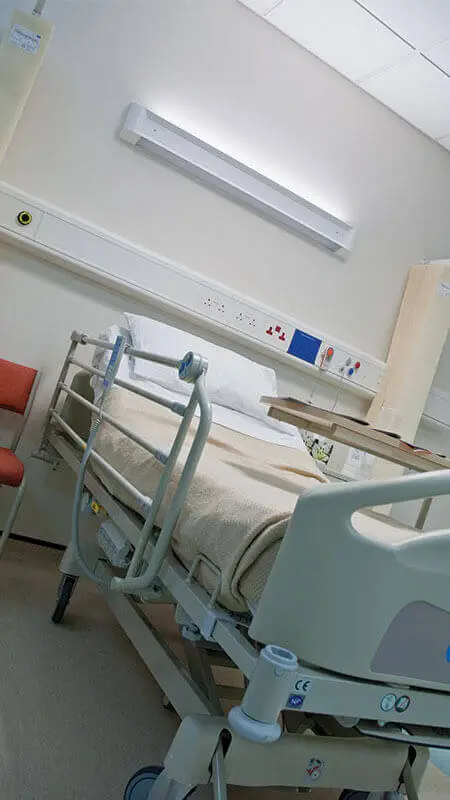
Night Lighting
Night lighting is installed in wards to provide enough light for the safe movement around the general ward area and, secondly, to allow the nursing staff the ability to discern facial features and a patient’s general condition.
The lighting level needs to be high enough to allow nursing staff to see the patient’s face balanced against the need not to disturb the patient’s sleep.
The illuminance for the central ward circulation space should therefore be no more than 5 lux average at 0.85 m working plane. In addition the maximum permissible level measured any where on the pillow should be 0.5 lux. To help with visual acuity the maximum level measured anywhere in the ward should not exceed 10 lux at a working plane of 0.85 m

